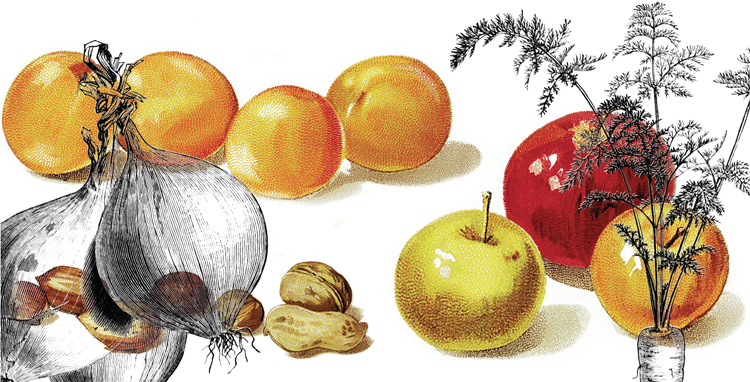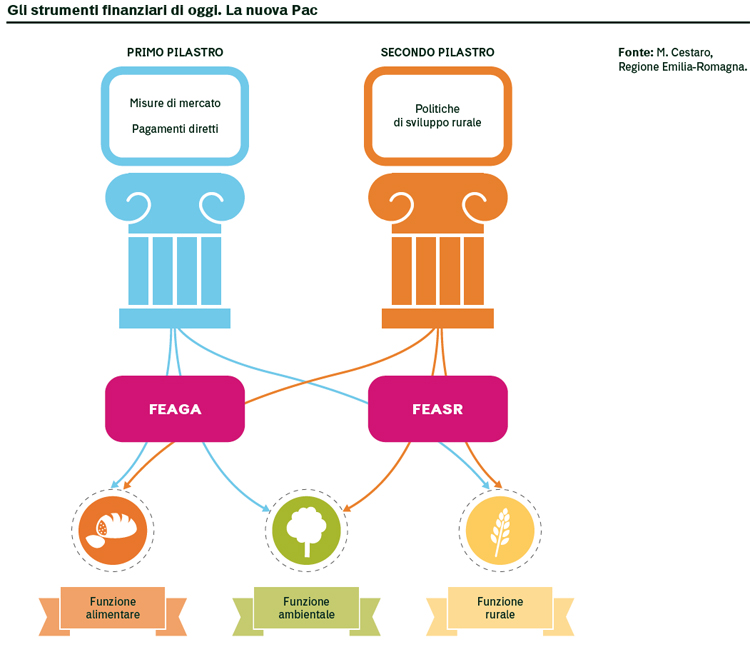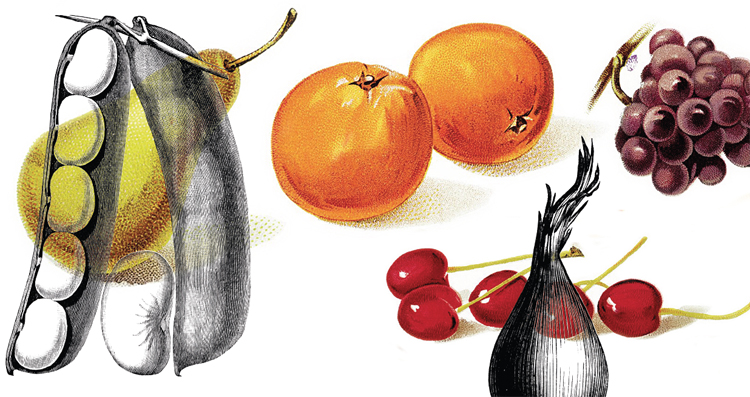High production volumes achieved through growing investments in advanced technologies and technical means aimed at increasing productivity (fertilizers) and reducing risks (phytochemicals) caused by increasingly resistant and aggressive pathogens. For modern, “industrialized” agriculture, this is probably a partial, but undoubtedly accurate portrait.
Today, however, agriculture is evolving, thanks to changes occurring in different fields and converging towards some new development paths, other than the ones that have caught on since the second half of last century.
The first pivotal driver should be contextualized and is linked to the forecast of a drop in inputs (that is water and arable land), as by 2050, the global population will be of 9 billion. Increasing food availability in such a context highlights the issue of waste. Waste reduction is a goal for the entire supply chain: from farms to distribution companies, up to retail and consumer habits.
And the second powerful driver of change precisely involves consumers and their different relationship with food. The degree of information and awareness expressed nowadays when purchasing food, at least in the most advanced societies, values several factors, including product origin, organoleptic properties and health. The impact on consumption decision has been immediate: certified production chains are growing and they involve limited inputs (integrated and organic production). For the very same reasons, consumers are now leaving supply chains that are perceived as less safe and less controlled (and this is one of the possible reasons for the increasing number of consumers going vegetarians or vegans).

The “Culture Factor”
Globally, in 2014 (according to IFOAM and FIBL figures), land used for organic farming was 43.7 million hectares out of the currently total farmed surface of 1.6 billion hectares (FAO data), whereas farms were over 2 million, having a turnover of 72 billion Euros. EU countries’ interest has quickly grown: in the last decade, land used for organic farming has increased by 500,000 hectares per year and there are now nearly 190,000 organic farms. Only in the fruit and vegetables sector, in 2014, land farmed for organic agriculture was 1,814,000 hectares globally and 500,000 in Europe. Also the number of vegetarians and vegans has increased: in Italy, for example, in 2013, they were 6% of the population, reaching 8% in 2015 (Eurispes data). This market is currently worth over 320 million Euros in Italy: such relevant figures have sparkled the creation of franchising stores and have led big companies to introduce some product lines for this very market.
A causal link therefore exists between changing habits and development of environmentally-friendly production processes (as organic farming or integrated production), which we could define as “culture factor”, acting on both supply and demand.
In the EU, organic farming is regulated by EU Reg. 834/2007 (as amended), based on decreased external inputs in the system: no pesticides, herbicides or synthesys chemical fertilizers are used. On the contrary, natural methods are used to ensure productivity and lower environmental impact and renewable resources are used – stemming from both plant and animal waste recycling – to improve soil fertility.
Integrated pest management is regulated by directive 128/2009/EU, “Sustainable Use of Pesticides”, aimed at reducing risks and impact of chemical products on both human health and the environment, fostering alternative approaches to the use of said chemical compounds and using forecast models for targeted phytosanitary actions.
In fruit and vegetables production, Areflh has fostered extension of integrated pest management to all inputs, including cultivars (in agronomy, this terms designates a plant strain achieved through genetic improvement, editor’s note) that are genetically resistant to disease, but also fertilization, irrigation, conditioning and packaging of produce, using a supply chain approach. The abovementioned integrated production uses production techniques involving limited and informed use of pesticides, fertilizers and water, while fostering the use of biologic defense methods and sexual confusion to control parasites, mulching to reduce the use of water and herbicides. It is regulated by procedural guidelines that may lead to the creation of voluntary brands to give more visibility to products.
Such “virtuous” farming approaches consistently complement the general plan of bioeconomy. In particular, they do so when envisaging the use of techniques and means provided by green chemistry, including mulching cloths, compostable pheromones clips and dispensers. Biodegradable and compostable plastic and a herbicide molecule like pelargonic acid (having lower environmental impact in terms of residues and being quickly biodegraded in the environment) are significant examples of the contribution given by green chemistry to sustainable farming practice. Optimization in the use of organic fertilizers and natural phytosanitary products, as well as the fight against resource waste, complement the innovation strategy, implementing the concept of circular economy in agriculture.
Funding Innovation: The Example of Biodegradable and Compostable Plastic
A pivotal tool available to farmers for innovation in their crops is the Common Agricultural Policy (CAP), supported and funded by two types of funds: EAGF (European Agricultural Guarantee Fund) and EAFRD (European Agricultural Fund for Rural Development), which are part of the two “pillars” of this policy, the former including Common Market Organisations (CMOs) or market actions, the latter dealing with rural development.

Fruit and Vegetables CMO
Set up by the EC Reg. 1308/2013, the Fruit and Vegetables CMO – gathering farmers and producers – believes in innovation to manage competitiveness. The Common Market Organisation is the essential tool of the common agricultural market in the framework of the Common Agricultural Policy (CAP) and covers approximately 90% of EU agricultural production. The Fruit and Vegetables MCO involves leaders in charge of enforcing regulations, Producer Organisations set up on a voluntary basis.
The Rural Development Policy has specific and strategic economic, environmental and health goals, meeting priorities established by the EU for the agricultural policy: competitiveness development, sustainable management of rural resources, reduction of risks linked to climate change, through balanced development of rural areas. To achieve said goals, the following approaches are implemented:
- foster knowledge transfer and innovation in agriculture;
- enhance agriculture competitiveness and farm profitability;
- promote the organization of agricultural and food chains and reduce the risk of market crisis;
- maintain, restore and enhance ecosystems farming activities depend on;
- develop efficient use of resources fostering low carbon economy;
- foster economic development of rural areas and reduce poverty.
Market measures included in the first pillar are an example of funding of innovation linked to new economic models. In particular, it is linked to the fruit and vegetables CMO funding innovation and environmental protection, along with market measures. Biodegradable and compostable mulching cloths have now been officially included among innovative items funded and are a clear example of low-environmental impact inputs, in line with the circular economy, implemented at a European level. For such innovation, each country of the fruit and vegetables CMO (see box) has decided to follow different approaches to achieve the very same environmental goal: reduce plastic waste that is hard to manage, while reducing chemical inputs (herbicides).
In France, the higher cost is covered to purchase reusable or biodegradable plant mulching, rather than products that do not have said characteristics. In case standard techniques do not envisage traditional mulching, biodegradable mulching cloths are completely funded, in compliance with amounts established based on a study taking into consideration differences between this new practice and the one considered as standard.
In Italy, Decree no. 9084 of 2014 envisages the use of biodegradable and compostable mulching, threads and clips among low-environmental impact inputs (that is in compliance with mandatory environmental regulations).
In particular, “for mulching with biodegradable cloth, both on annual and multiannual crops, in open field and protected crops, expenses incurred for the purchase of film are eligible. Furthermore, the higher cost incurred by farms for mulching installation, compared to standard techniques, is eligible. Expenses incurred on the same land for repeated crops are also eligible.”
In Spain, the use of biodegradable plastic is eligible and funded among agricultural and environmental actions aimed at reducing impact. Also in this case, funding for farmers, since 2014, has been allocated following a study conducted by an independent body to check the cost difference from traditional materials. In particular, in fruit and vegetables production, the use of biodegradable and compostable thread and clips for plant support (tomatoes, aubergines, etc.) is funded. They also receive 66% of the cost per kilo of materials purchased. For biodegradable mulching, said value is 60% of the total expense incurred.
Similarly, in Portugal and in Belgium, some measures exist that fund the cost difference between biodegradable and conventional materials.
In short, in fruit and vegetables producing countries, the national environmental strategy envisages support for innovative inputs reducing plastic waste in farming. The fruit and vegetables CMO has been one of the few European regulations aiming at fostering virtuous practice in environmental protection.

The Third Driver of Change: Research
In 2014, the EU approved the Horizon 2020 research funding programme, envisaging investment of 3% of the GDP of each member State, worth approximately 80 billion Euros, aimed at: enhancing the role of the EU in farming, fostering industrial innovation to set up new investments in technology, dealing with several issues, including climate change, sustainable transport and renewable energies.
Agriculture, innovation and environmental issues appear among the priorities of the European legislator’s agenda. Though complex in terms of application, all financial measures established in favour of European farmers make it possible for the agricultural system to use resources that allow implementing innovations required to meet the needs of both farmers and consumers.
Stagnation experienced by agriculture in Europe must be overcome by reacting to consumers’ requests and to the need of “feeding the planet,” while reducing inputs (available water and land).
A different economic model, like the one proposed by the bioeconomy, combined with lower-environmental impact products and higher use of internal farm resources may be a solution to environmental and demographic challenges of the future.
“Into the future. Consolidated annual report of IFOAM – organics international”, www.ifoam.bio/sites/default/files/annual_report_2015_0.pdf
Assembly of the European Regions producing fruit and vegetables, areflh.org/index.php?lang=en

